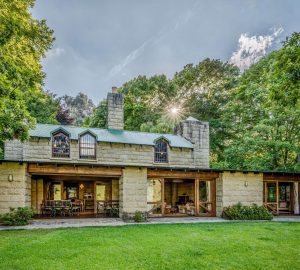How to weigh up the costs of renovating versus relocating
Adding value when renovating means avoiding these common mistakes
Wednesday 7th of October 2020
Looking to upgrade your home this Spring? Before embarking on this courageous task it’s advisable to research the cost of renovating versus relocating. Among the first things to bear in mind are the actual costs of moving – and the associated transfer fees.
The Know spoke to real estate experts Carol Reynolds and Lanice Steward, from Pam Golding Properties, on how to make that decision. Not only that, but the pair also provide excellent criteria to weigh up just how far you should go with your investment.
Consider your time frame
If you plan to sell the house in the shorter (five years) term, and wish to recoup the costs of renovating, as well as add value to the property, you should aim to be as cost effective as possible so that your capital investment can recover your renovation costs.
Also, ensure that the standard of work is good, as poorly executed renovations will obviously impact negatively on the value of your property, advises Reynolds.
3 Ways to avoid over-capitalising
Residential property is twofold – it’s about a lifestyle choice and it’s an investment, so if your priority is to live in your home for several years and enjoy it, then renovate it to suit your needs. If, however, you are more investment-minded, make sure that your renovation cost doesn’t outstrip the price-ceiling in your area. Here’s how:
- A valuation of your home in it’s current condition is key.
- Make sure you have suburb statistics before proceeding with a renovation.
- When making lifestyle improvements to suit your own needs, bear in mind that these should have wider appeal down the line.
An agent who understands the local market and all its dynamics, will not only provide a market-related valuation, but can provide up to date statistics on prices achieved for comparable homes. They will also be able to compare prices of renovated and unrenovated properties and advise you which improvements will improve your saleability, says Reynolds.
8 Ways to spend where it counts, when spending more
If you need to spend a bit more on the renovation, here’s how to spend where it counts:
- Open up spaces by demolishing internal walls.
- Invest in modern bathrooms and kitchens that are tasteful and not extravagant.
- Don’t overspend on high quality fittings as these are never fully appreciated – instead;
- Invest in creating good spaces and great flow.
- Added bathrooms and bedrooms are always welcome.
- Green features, like solar heating or boreholes are fast-becoming sought-after.
- Be careful of overspending on a swimming pool in a water scarce-area, or a tennis court, billiards room or wine cellar where appeal is limited.
- Covered verandahs or upgraded entertainment areas are popular and make good investment and lifestyle choices.
6 Ways to spend less
Unless you are in a very sought-after suburb, you should undertake renovations that yield the best results with the minimum spend. According to our experts, that short list can look something like this:
- A coat of paint still does wonders.
- A little landscaping can lift a home.
- New light fittings are a surprisingly quick fix.
- Change kitchen counter tops and respray cupboards.
- Enhance your curb-appeal.
- Remove some interior walls to create better flow.
“The single biggest aspect why a property does not sell is the price. At a certain price, buyers will hear every car pass by if the house is on a busy road, but at a lower price, they will hear a pin drop! The same applies if there is an aspect of the house they do not like. One of the big negatives are outdated kitchens and bathrooms,” says Steward.
If you are thinking about selling or buying a home, we recommend contacting a Pam Golding Properties specialist in your area for accurate interpretation of information and professional advice.
Posted by Niki Jackson





